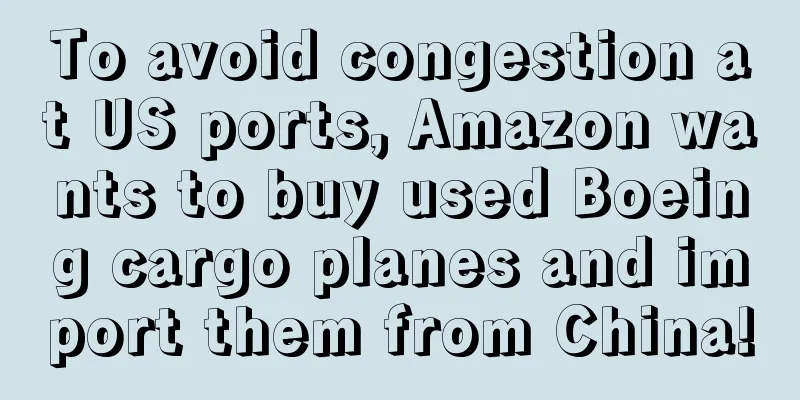Walmart WFS has fulfilled 25% of third-party sales! The flywheel effect is prominent

|
It is learned that according to MarketPlace Pulse, Walmart's WFS logistics service has fulfilled nearly 25% of Walmart's third-party sales orders in less than two years since its launch in February 2020. Walmart is taking the same path as Amazon, that is, creating the same flywheel effect. Walmart CFO Brett Biggs announced the 25% WFS fulfillment target during the third quarter earnings call, and it is worth noting that it took Walmart only 20 months to achieve this target. In contrast, it took Amazon FBA 15 years to achieve the 75% fulfillment target. Relationship between WFS and third-party sellers What is the same is that both FBA and WFS use the unified packaging of Amazon and Walmart, hiding the information of the seller providing the product, which usually makes buyers think that Amazon and Walmart are the product sellers. Most buyers on Amazon don’t notice they’re buying from a third-party seller because they rarely interact with them directly and all orders come in the same Amazon-branded box. For Amazon, these moves enable it to provide a consistent shopping experience and, more importantly, most Amazon sellers use its FBA logistics. More than 90% of the goods sold by Walmart online are provided by its third-party sellers. The role of Walmart WFS is the same as that of Amazon FBA, which is to integrate a huge selection of goods into its logistics system to provide a consistent shopping experience. As more sellers adopt WFS, fewer buyers will notice individual sellers, which is especially important for Chinese sellers that Walmart began to enter this year. WFS-driven growth flywheel Walmart’s third-party GMV more than doubled in 2020 and is likely to continue to grow faster than Amazon’s, and its growth is a key reason for sellers to adopt WFS. For many sellers, Walmart is now large enough to manage multiple fulfillment networks. When third-party sellers use the WFS service, delivery time is more guaranteed, so they can also be included in the range of products available to Walmart+ members. As the range of WFS products available increases, the value of Walmart+ also increases, which will attract more buyers to join Walmart+ members, and then encourage more sellers to join. More sellers joining means Walmart will have greater bargaining power, which will lower product prices. At the same time, when enough goods are processed every day, the cost of logistics itself will also decrease. This is similar to the flywheel that Amazon has built with Prime. However, many sellers on Walmart already offer fast, free shipping with no minimum order requirements, and Walmart will undoubtedly entice them to migrate to WFS in the future by offering discounted prices or indirectly adjusting its search algorithm to prioritize WFS sellers. Editor ✎ Xiao Zhu/ Disclaimer: This article is copyrighted and may not be reproduced without permission. |
Recommend
What is Amazon Launchpad? Amazon Launchpad Review
Amazon Inventor Program is a unique program that b...
Confusing behavior! Amazon sellers’ brands were removed and A+ disappeared...
During this period, a series of actions by Amazon ...
Amazon subsidizes 10% of its own money to encourage sellers to increase off-site traffic
Amazon recently updated an announcement in the bac...
Amazon launches limited-time free service again! Official intervention disrupts the EU agency industry
Recently, Amazon released a new announcement, sayi...
Sales soared 705%! Amazon's best seller relies on this product to dominate the list BS!
▶ Video account attention cross-border navigation ...
What is Exist.ru? Exist.ru Review
Exist.ru is the earliest e-commerce website in Rus...
Why is there an inexplicable explosion of orders today? The money printed by the United States has arrived!
After the outbreak, our sellers experienced a peri...
FedEx invests $42 million to build a distribution center covering 250,000 square feet!
It is learned that with the rapid development of e...
Young Americans are rushing to celebrate Halloween! Online shopping is the most popular
It is learned that according to the latest researc...
What is paromi? Paromi Review
Paromi is a unique oasis that specializes in selli...
If truck drivers go on strike, UPS will train managers to deliver packages!
Union president Sean O'Brien said on July 23 t...
What is Steam? Steam Review
Steam is an e-commerce platform for video games an...
Amazon's Voice: The Years I Was Heartbroken by Big Sale Holidays
Preface of the Little Clone: This week's cont...
Was your Amazon A+ page application rejected? You need to know these reasons
Brand description with pictures and text, also kno...
2025 is about to start with a catastrophe. Ads won’t work, shopping carts disappear. How can sellers save themselves?
Life will be really hard for Amazon sellers in 202...









